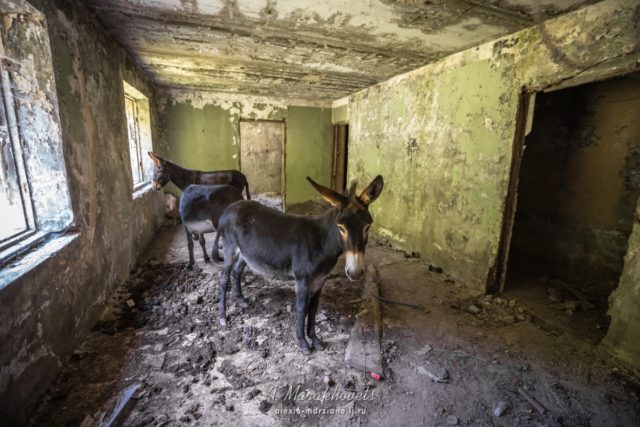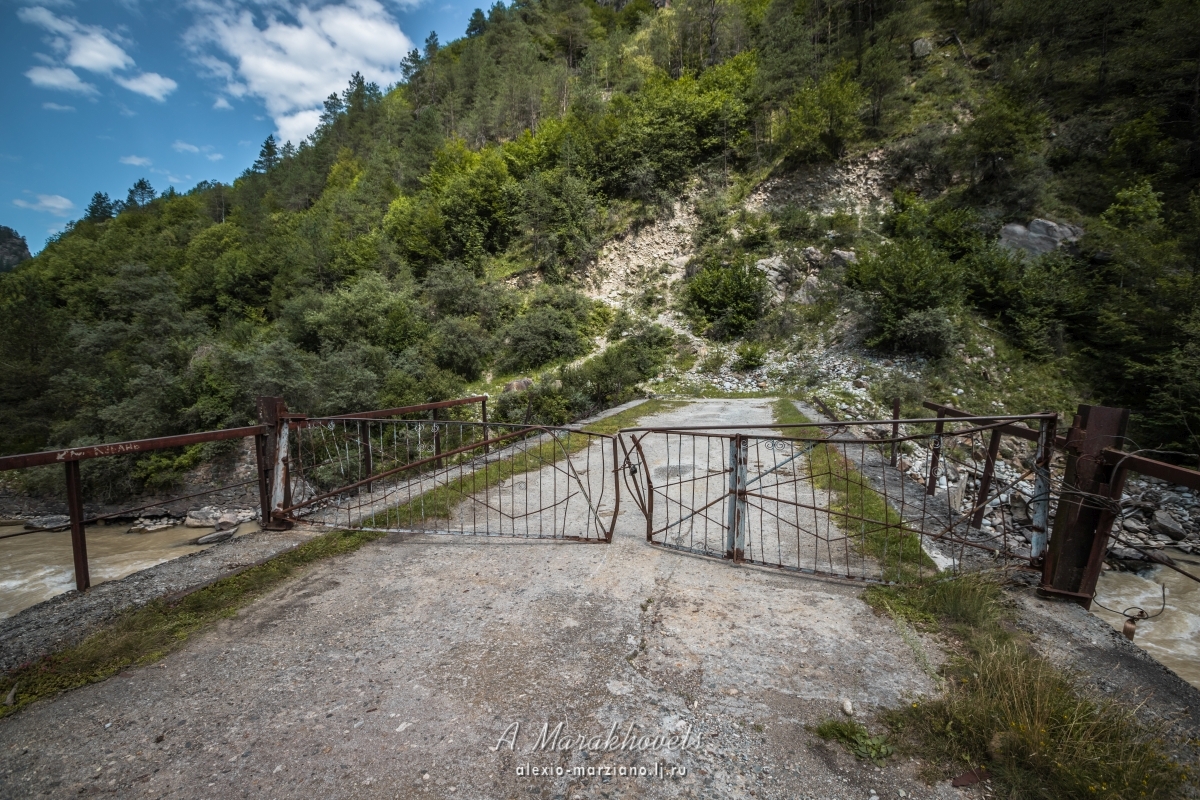The mostly abandoned Russian village of Elbrussky spans both banks of the Kuban River in the Karachay-Cherkess Republic. It covers an area of 149 hectares (358 acres). Being in the Kuban Gorge, it is surrounded by mountains covered with forests and lush vegetation.
It is thought that, in prehistoric times, silver-lead deposits were exploited in this area. Evidence supporting this conclusion was uncovered when traces of ancient workings were discovered around the middle of the 19th century, such as shallow workings, stone axes, pottery fragments, and rudimentary smelting forges.

However, the area really began to be industrialized in 1889 when an industrial engineer and entrepreneur named Tomashevsky received permission to carry out exploration work for silver-lead ores. He’d already prospected the site in 1866 and signed a lease for the area in 1887. He was permitted to build the roads, dams, and buildings necessary for his industrial work.
Tomashevsky invited the famous engineer Anatoly Dmietrievich Kondratyev to confirm the value of the deposit. Kondratyev reported that 17 veins of silver-lead ore had been identified. It was also Kondratyev who discovered the remains of the ancient mining practices.

The now abandoned mine was named Elbrussky, and the ore it processed was exported to England and France as well as being sold in Russia. The proceeds from its workings allowed the treasury to assist in developing surrounding mountain areas and towns. The money was used for improving education and health services.
In 1891, preparatory work was carried out and the necessary outbuildings were built. This included a plant that could smelt up to 2,000 poods of metal a year. Ore mining began after that, but a year later, the plant temporarily suspended work because both exploration and operation costs were too high.
To combat this, Tomashevsky’s sought to establish a joint-stock company that would exploit the Karachai silver-lead deposits. Emperor Alexander II approved the joint-stock company in 1893, but work didn’t start at the mine again until 1895.

Unfortunately, that same year, there was a sharp decline in lead prices, and many Spanish mines closed. The Elbrussky mine wanted to take advantage of this, but the fast delivery of ore to different countries meant that they were soon running into debt. The joint-stock company was unable to obtain a loan from the government, and the mine was forced to close in 1897 for 15 years.
Without governmental support, the mine was transferred to private investors abroad. After two failed attempts to do this and get the mine working, the mine was transferred to VF Romanova, Alexander III’s sister, in 1911.

The arrival of the First World War increased the demand for lead dramatically. Consequently, work resumed at the Elbrussky mine in 1915, providing the country with lead, zinc, and copper. With assistance from the government, the mine’s output was increased, and Elbrussky became the primary lead producer in the country.
In 1916, Romanova sold the mine to two capitalists from Russia. Then, after the Great October Revolution, it was nationalized. Work ceased in 1918, while the government conducted research into how to restore industry after the civil war.
Ten years later, when this research was completed, the Elbrussky mine passed to the Karachaevskiy Regional Executive Committee, but it did not resume workings. Instead, geological exploration work was carried out there from 1930 to 1950.

During this period, there was an increased demand for non-ferrous metals as the country’s industry began to develop. It was noted that the mine could be profitable again, and activities were resumed in 1950 when permission and funds were received.
A recruitment drive was announced and houses for miners were constructed. A settlement was built up and named Polyana (later changed to Magaro). As well as residential buildings, a small hospital, school, kindergarten, bathhouse, and club were constructed. The population grew to about 1,500 people.

After 1957, the Karachai people began to return to their homes, and Magaro was renamed Elbrussky. The 1959 Census recorded that there were 1,570 people of 14 different nationalities living there.
Life continued as normal until the summer of 1976 when the mine was liquidated due to being unprofitable. Between 1907 and 1975, around 510,000 tons of lead and zinc had been mined there.

From 1977 onwards, Elbrussky was converted into a training base for the Moscow Mining Institute. Students studied geology and underwent practical training in a mine that functioned specifically for such student practices. The village became a student city until 1995 when the training base was closed due to financial difficulties.
After that, Elbrussky became half-abandoned, with the 2020 census recording only 270 people living there. On hot days, cows will use the mine shafts to shelter from the midday sun. Since 2008, Elbrussky has been used as a base to monitor the geochemical processes associated with the activity of the Elbrussky volcano.

Alexey Marakhovets is a traveler and photographer who dreams of visiting every country around the world. So far, he has already visited 40 countries.
Alexey runs his own blog containing the information he collects during his trips as well as showcasing the impressive photos he’s taken. You should definitely check out his LiveJournal account via this link.



Another Article From Us: The massive abandoned submarine base

